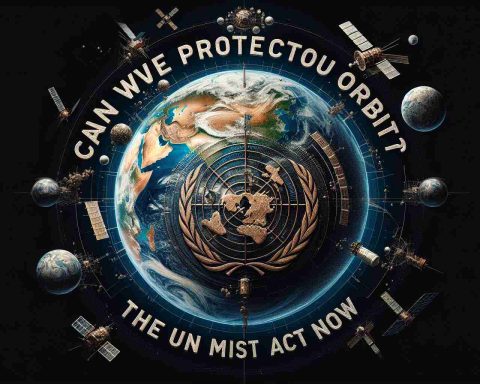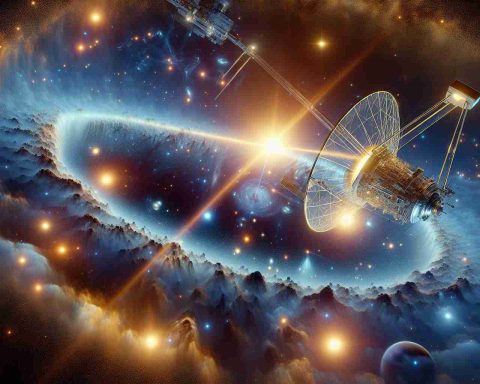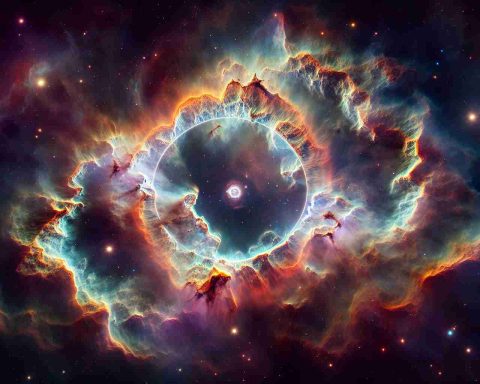Urgent Call to Action for Space Safety
An international coalition of scientists is urging the United Nations to expand its sustainable development agenda to include the safeguarding of Earth’s orbital environment. Spearheaded by prominent researchers from NASA’s Jet Propulsion Laboratory and other esteemed institutions, this initiative highlights the escalating crisis of space debris in our increasingly crowded skies.
The emergence of megaconstellations—massive fleets of small satellites for internet access and Earth observation—has propelled the total number of satellites to over 15,000, a stark contrast to a mere thousand just a decade and a half ago. As these satellites age, they pose a serious threat, transforming into hazardous debris that risks colliding with operational satellites.
An advocate from Slingshot Aerospace emphasized that establishing a dedicated Sustainable Development Goal for space would be pivotal in preserving this critical environment. She noted that the massive increase in satellite deployments has raised collision risks significantly—a concerning trend that highlights the need for immediate global collaboration.
The proposal also draws parallels between ocean pollution challenges and the debris hazards in space, suggesting that lessons learned from marine conservation efforts could inform better strategies for managing orbital waste. Global experts warn that the existing trajectory could lead to catastrophic outcomes, including a phenomenon known as “Kessler syndrome,” undermining the safety of our planetary orbit.
With concerns over atmospheric pollution from re-entering satellites mounting, the call for action has never been more urgent.
Expanding Horizons: The Implications of Space Debris Management
The international effort to safeguard Earth’s orbital environment reflects a critical intersection of technology, policy, and environmental sustainability. The urgent call for action isn’t merely about protecting satellites; it resonates deeply with broader societal and cultural values related to stewardship of our shared assets. As nations race to deploy satellite constellations, a cohesive framework for responsible space use is essential to maintain equitable access for future generations.
The global economy stands to reap significant benefits from proactive measures against space debris. A coordinated approach could facilitate the development of innovative technologies for debris removal and enhance international cooperation, ultimately leading to a flourishing satellite economy valued at approximately $350 billion as of 2021. Moreover, enhancing orbital safety can bolster confidence among investors and stakeholders who are pivotal to the long-term success of space ventures.
Environmental implications further underline the urgency of this initiative. Space debris contributes to the growing concern of atmospheric pollution, with particles re-entering the atmosphere potentially creating hazardous conditions. As these environmental challenges mount, the importance of sustainable practices in orbital activities becomes increasingly evident.
In facing these complexities, the prospect of future trends in space governance appears promising but fraught with challenges. As new satellite technologies evolve, so must our strategies to mitigate their impact on the orbital environment. A collaborative global framework could serve as a template, not only for space but for addressing other pressing environmental concerns, reinforcing the notion that the preservation of our physical and digital skies is pivotal for both current and future sustainability.
Space Safety in Crisis: The Urgent Need for a Global Action Plan
Introduction
As space becomes increasingly crowded, an international coalition of scientists is highlighting the urgent need for the United Nations to address space safety as part of its sustainable development agenda. Triggered by the dramatic rise in satellites and the ensuing risk of space debris, this initiative seeks to safeguard Earth’s orbital environment.
The Crowded Cosmos: A Growing Concern
In recent years, the number of satellites orbiting Earth has surged to over 15,000, primarily due to the rise of megaconstellations. These large fleets of small satellites serve critical functionalities such as internet access and Earth observation. Just fifteen years ago, the satellite count stood at around 1,000, which indicates a staggering exponential growth.
Risks of Space Debris
As satellites age, they can become hazardous debris, posing collision risks not only to functioning satellites but also to the International Space Station (ISS) and other space missions. The phenomenon of “Kessler syndrome” is a notable concern; it occurs when the density of objects in low Earth orbit becomes high enough that collisions would create more debris, which would lead to further collisions, ultimately jeopardizing all space activities.
The Call for International Collaboration
Experts, including advocates from Slingshot Aerospace, emphasize that establishing a dedicated Sustainable Development Goal (SDG) for space is essential. They argue that a focused global effort is imperative to address these risks, akin to past international efforts to combat ocean pollution. Such an SDG could prioritize the development of innovative policies and technologies for debris tracking, removal, and prevention.
Lessons from Earth’s Oceans
The discussion surrounding space debris also draws parallels to ocean conservation efforts. By studying successful marine strategies, scientists believe they can develop effective frameworks for managing orbital waste. This cross-domain collaboration could yield innovative regulations and practices aimed at mitigating space debris.
Implications of Satellite Re-entries
Increasing concerns about atmospheric pollution caused by re-entering satellites further underscore the need for proactive measures. As satellites deorbit, they pose risks not only through potential collisions but also through harmful emissions upon re-entry. Addressing these aspects is crucial for ensuring the sustainability of both air and space environments.
Conclusion
The urgency of this call to action cannot be overstated. With the rapid expansion of satellite technology and the accompanying risks, immediate global collaboration is necessary to secure the future of space exploration and utilization. Protecting our orbital environment is vital for the continuous benefits that satellites provide to society, including communication, navigation, and earth observation.
Frequently Asked Questions (FAQ)
What is space debris?
Space debris consists of defunct satellites, spent rocket stages, and fragments from collisions that remain in orbit around Earth.
Why is space debris a problem?
Space debris poses collision risks to operational satellites and spacecraft, including the ISS, and can lead to catastrophic chain reactions known as Kessler syndrome.
What are megaconstellations?
Megaconstellations are large networks of satellites designed to deliver internet and other services. These can consist of thousands of small satellites working in unison.
How can we manage space debris?
Strategies for managing space debris include the development of tracking systems, active debris removal technologies, and international policies aimed at minimizing the creation of new debris.
For further details on this urgent call to protect Earth’s orbital environment, visit the United Nations.








